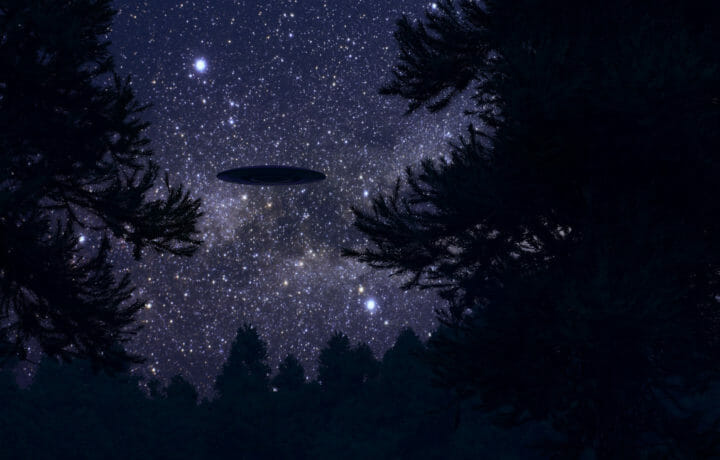The truth isn’t out just yet, but UFO enthusiasts shouldn’t get their hopes up that those “unidentified aerial phenomena” (UAP) – long known as UFOs – are of extraterrestrial origin. A declassified version of the latest U.S. defense-intelligence report is expected to be released to the public this month, but the government’s official conclusions are that any of the unexplained sightings are likely a mix of foreign surveillance, including drones, and airborne clutter such as weather balloons.
Such conclusions aren’t all that different from the June 2021 Preliminary Assessment: Unidentified Aerial Phenomena, released by the Office of the Director of National Intelligence (ODNI). It noted that UAP probably lacks a single explanation, and suggested that when individual UAP incidents are resolved these would fall into one of five potential explanatory categories: airborne clutter, natural atmospheric phenomena, USG or industry developmental programs, foreign adversary systems, and a catchall “other” bin.
“There is no single explanation that addresses the majority of UAP reports,” U.S. Defense Department spokesperson Sue Gough said via a statement. “We are collecting as much data as we can, following the data where it leads, and will share our findings whenever possible.”
What Is Other?
Four of the categories are straightforward – and clutter could include birds, balloons, drones, or even plastic bags caught in the wind; and natural phenomena could be something as simple as ice crystals and moisture that may register on some infrared and radar systems; while UAPs could also include classified programs by the U.S. government, as well as technologies from China or Russia. The issue is still what is meant by “other.”
That could certainly give those who “look to the skies” further ammunition that the government isn’t being so transparent.
The ODNI Preliminary Assessment only stated, “Although most of the UAP described in our dataset probably remain unidentified due to limited data or challenges to collection processing or analysis, we may require additional scientific knowledge to successfully collect on, analyze and characterize some of them. We would group such objects in this category pending scientific advances that allowed us to better understand them. The UAPTF intends to focus additional analysis on the small number of cases where a UAP appeared to display unusual flight characteristics or signature management.”
It sounds much like what the late Donald Rumsfeld, former secretary of defense, said while defending the Bush Administration’s decision to go into Iraq, namely, “There are things that we know we don’t know.”
The Final Word – Probably Not
There aren’t likely to be any answers that satisfy everyone’s curiosity on the matter, especially given the number of UAPs. It was in May of this year, that senior defense intelligence officials told members of Congress that the number of UAPs cataloged by the Pentagon’s newly formed task force had grown to 400. Only about half of the cases could be explained.
Though the officials said the analysis lacked the evidence suggesting any of the sightings were actually of alien spacecraft, most UAP reports will likely remain unresolved. This includes objects reportedly observed by Navy pilots that exhibited speed and maneuverability exceeding known aviation technology and lacking any visible means of propulsion. In other cases, some of the objects lacked traditional flight control surfaces.
“In many cases, observed phenomena are classified as ‘unidentified’ simply because sensors were not able to collect enough information to make a positive attribution,” Gough added. “We are working to mitigate these shortfalls for the future and to ensure we have sufficient data for our analysis.”
Project Blue Book
Between March 1952 and December 1969, the United States Air Force conducted a systematic study of UFOs as part of its “Project Blue Book,” which was headquartered at Wright-Patterson Air Force Base, Ohio, and initially directed by Captain Edward J. Ruppelt. It followed projects of a similar nature including Project Sign, established in 1947, and Project Grudge in 1948.
Project Blue Book had two goals, namely, to determine if UFOs were a threat to national security, and to scientifically analyze UFO-related data. By the time it was ended, it had collected 12,618 UFO reports, and concluded that most of them were misidentifications of natural phenomena – including clouds and stars – or conventional aircraft. Ruppelt, who has been widely regarded as an effective and objective investigator-manager, was reported to be genuinely perplexed by the UFO phenomenon.
He is also generally credited with coining the term “Unidentified Flying Objects.”
In his 1956 book, titled The Report on Unidentified Flying Objects, Ruppelt explained that the Air Force had two bitterly divided factions. There were those who believed such UFOs were alien in nature, while others were far more skeptical. Those in the former camp even included generals and top-grade civilians, and their views were backed up by some civilian scientists of the era.
The pending report is unlikely to change any minds, especially as it lacks any final conclusion. The truth may be out there, but an absolute explanation won’t likely be in the report.




